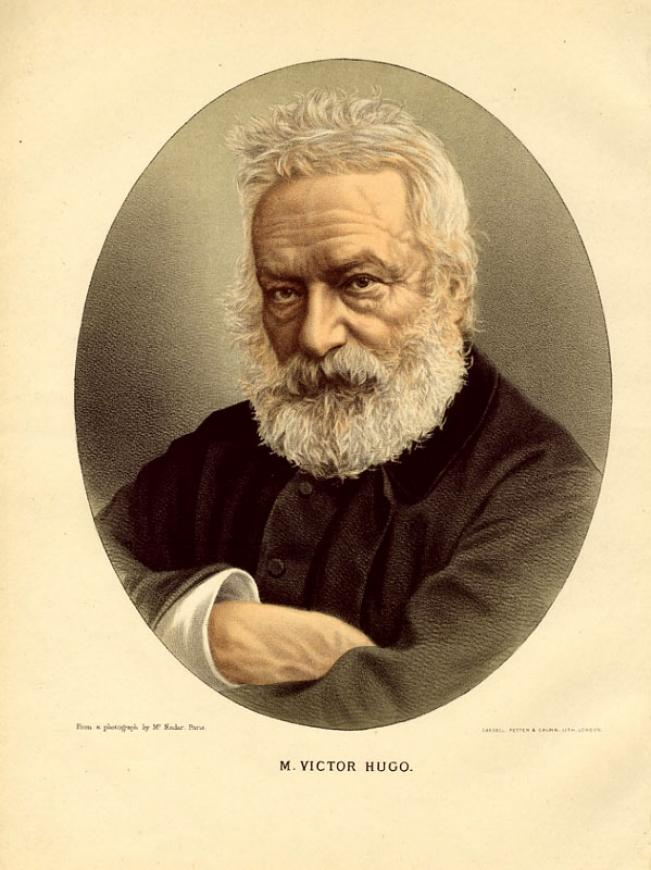Victor Hugo is widely regarded as one of the greatest writers of all time. His wide palette of masterpieces includes: Les Miserables, the Hunchback of Notre-Dame, The Man Who Laughs, the Last day of the Condemned Man, Les Orientales and many others. Hugo died on May 22, 1885, and this year, it marks 130 years anniversary of his death. In that regard, let’s take a look at some of the most interesting and fascinating facts of Hugo’s life and publishing career.
He was writing naked
All writers suffer from blockage from time to time. Hugo was not an exception. Quite the contrary, it is well known that when he was writing Les Miserables, he had to battle with “writer’s block” several times. It is a known condition to writers and everyone copes with it differently. But the French novelist had a unique way of coping with the condition. He took all his clothes off, locked himself in a room with a pen and paper, and wrote. Hugo famously claimed that he wanted to be in a room where not even clothes distract him. He was forcing himself to write and ordered his servants not to bring him clothes until he has finished writing a chapter. Hugo worked on Les Miserables for more than 20 years. He first got the idea in the 1830s, started working in the 1840s and finished the book in 1862.
Foot fetish
Back in the days, most of the great minds were womanizers and enjoyed sex. Victor Hugo was one of the greatest writers, but also one of the greatest sexual players in the world of writers. What is interesting about Hugo’s sex life is that he was a foot fetishist. Everyone had fetishes back then and now, and Hugo’s one was feet. And he is in great company. Many other great writers have also been foot fetishists, including Dostoevsky, F. Scott Fitzgerald and Goethe.
![]()
Hugo’s wife Adele
There are many stories linked with the marriage of Victor Hugo and his childhood sweetheart, Adele Foucher. Their marriage started strong, according to the biography of the French novelist. One of the people writing Hugo’s biography, Edward Behr, noted that Hugo made love nine times with his wife on their wedding night. The writer allowed room for embellishment for his wife, but the wedding night was a trial for his bride. According to Behr, the feelings Foucher had for the writer were never the same after the brutal wedding night. They got married in 1822 and had five children: Leopold (died in infancy), Leopoldine, Charles, Francois-Victor and Adele.
Infidelity
Victor Hugo loved his wife, but that didn’t stop him from cheating on her constantly. The famous writer had many mistresses, one of which was his son’s wife. His first mistress was Juliette Drouet. She became Hugo’s mistress in the same time his wife Adele was involved in an affair with Charles Augustin, a friend of the writer. Drouet was the longest tenured mistress of the writer. Even though he had many other mistresses, he alwas came back to Juliette, even making her his unpaid secretary. One of his other mistresses, Leonie Biard, went to jail for adultery during one of the escapades. The writer also seduced the wife of his son once. Alice Ozy was cheating on Victor’s son, so the father decided to help him. He seduced the woman in a way to bring revenge to his son who was pleased with his father’s actions.
Les Miserables
Victor Hugo’s greatest work is Les Miserables, published in Paris on May 15, 1862. The book was sold out in a few hours. However, it was not considered a huge success right from the start. One the contrary, the book received mixed reviews in the beginning: some were considering it a flop, some said Hugo was a madman, some praised as brilliant and remarkable. Today, it stands as one of the greatest novels in history. During the American Civil War, it was the most popular novel between US soldiers. The book has five parts, including Fantine, Cosette, Marius, the Idyll in the Rue Plumet and the Epic in the Rue St. Denis. The final, sixth chapter is an epilogue titled Jean Valjean. The success of the novel has transferred on stage, with multiple musicals produced according to its content. The first, and original musical opened at the Barbican Centre in London on 8th October, 1985 and is the longest running musical on the West End. The show has been produced in more than 42 countries, and the novel has been translated to more than 21 languages. In 2012, Hollywood made a movie, a musical, starting Hugh Jackman as Jean Valjean, Anne Hathaway as Fantine, Russel Crowe as Jawert and Amanda Seyfried as Cosette.



